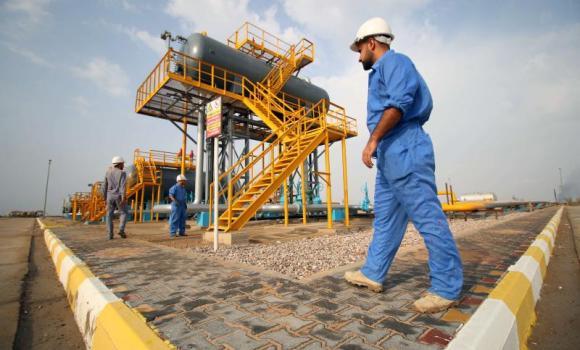
Record oil glut stands at 3 billion barrels
The world is awash with oil having built record stockpiles in recent months and slowing demand growth combined with resilient non-OPEC supply could worsen the glut well into next year, the International Energy Agency (IEA) said.
“Stockpiles of oil at a record 3 billion barrels are providing world markets with a degree of comfort,” the IEA said in a monthly report, adding brimming stocks offer an unprecedented buffer against geopolitical shocks or unexpected supply disruptions.
Oil prices have more than halved in the past 18 months with supply bolstered by US shale oil output and OPEC’s refusal to cede market share.
The IEA said global oil supplies breached 97 million barrels per day in October, up 2.0 million from a year earlier, as non-OPEC output recovered from lower levels in the previous month.
And even though lower oil prices will lead to a decline in US tight oil production next year, it will take months to clear the market’s glut, the IEA said.
“This massive cushion has inflated even as the global oil market adjusts to $50 per barrel. Demand growth has risen to a five-year high of nearly 2 million bpd... But gains in demand have been outpaced by vigorous production from OPEC and resilient non-OPEC supply — with Russian output at a post-Soviet record and likely to remain robust in 2016 as well,” the IEA said.
On Thursday, OPEC said in its monthly report that inventories in developed economies were showing their largest excess, relative to the five-year average, in at least 10 years.
A stock overhang that first developed in the United States due to soaring production has now spread across developed nations as well as China and India, the IEA said.
“This surplus crude provides some relief, with OPEC’s spare production buffer stretched thin as Gulf producers pump at near record rates,” the IEA said.
DISTILLATE INVENTORIES
“The shock absorber provided by oil stocks is no longer restricted to just crude. As refineries ran flat out to meet soaring demand for gasoline in top consumers the United States and China, distillate inventories ballooned as a consequence.”
High stocks could protect the market from a supply crunch should there be a lengthy spell of cold temperatures.
“But the current forecast is for a mild winter in Europe and the US If it turns out to be true, bulging stock levels will add further pressure and oil market bears may choose not to hibernate,” the IEA said.
EASING DEMAND GROWTH
Meanwhile, world demand growth is forecast to ease closer to a long-term trend of 1.21 million bpd in 2016 from a very high 1.82 million bpd this year.
“The impact of oil’s steep price plunge on end users is unlikely to be repeated and economic conditions are forecast to remain problematic in countries such as China,” the IEA said.
The IEA said that despite the resilience of producers such as Russia, non-OPEC supply is forecast to contract by more than 600,000 bpd next year.
US light tight oil, the driver of non-OPEC growth, is expected to decline by 600,000 bpd next year, versus previous expectations of contraction by 400,000 bpd.
“Record-high output in Russia provides a partial offset. Russian producers are favoring developments that boost output in the near term, while the rouble’s depreciation and Russia’s oil taxation system are neutralizing the impact of lower prices and spending curbs,” it said.
The IEA raised its forecast for 2016 call on OPEC supply by 200,000 bpd to 31.3 million.
It sees the call on OPEC in the second half of 2016 rising by 1.4 million bpd from the first half to 32 million bpd, which is higher than the group’s current production.
A market share battle between Russia and OPEC producers in Europe is intensifying. Iraq has overtaken Saudi Arabia as the second-largest seller and Iran has already lined up buyers for its oil for when sanctions are lifted.
The IEA cited market sources on Friday as saying Tehran would be able to sell at least an extra 400,000 bpd to buyers in Asia and Europe once sanctions are lifted, including to refiners in Italy, Greece and Spain who prefer to use Iranian crude as their baseload feedstock.
“For this reason, producers are likely to grow still more competitive on pricing,” the IEA said.
“Sour crude markets appear especially oversupplied with discounts versus sweet grades widening. Europe is awash with competing sour crudes from the FSU (former Soviet Union) and Middle East and US sour crudes remained depressed by refinery maintenance,” the IEA said.

























